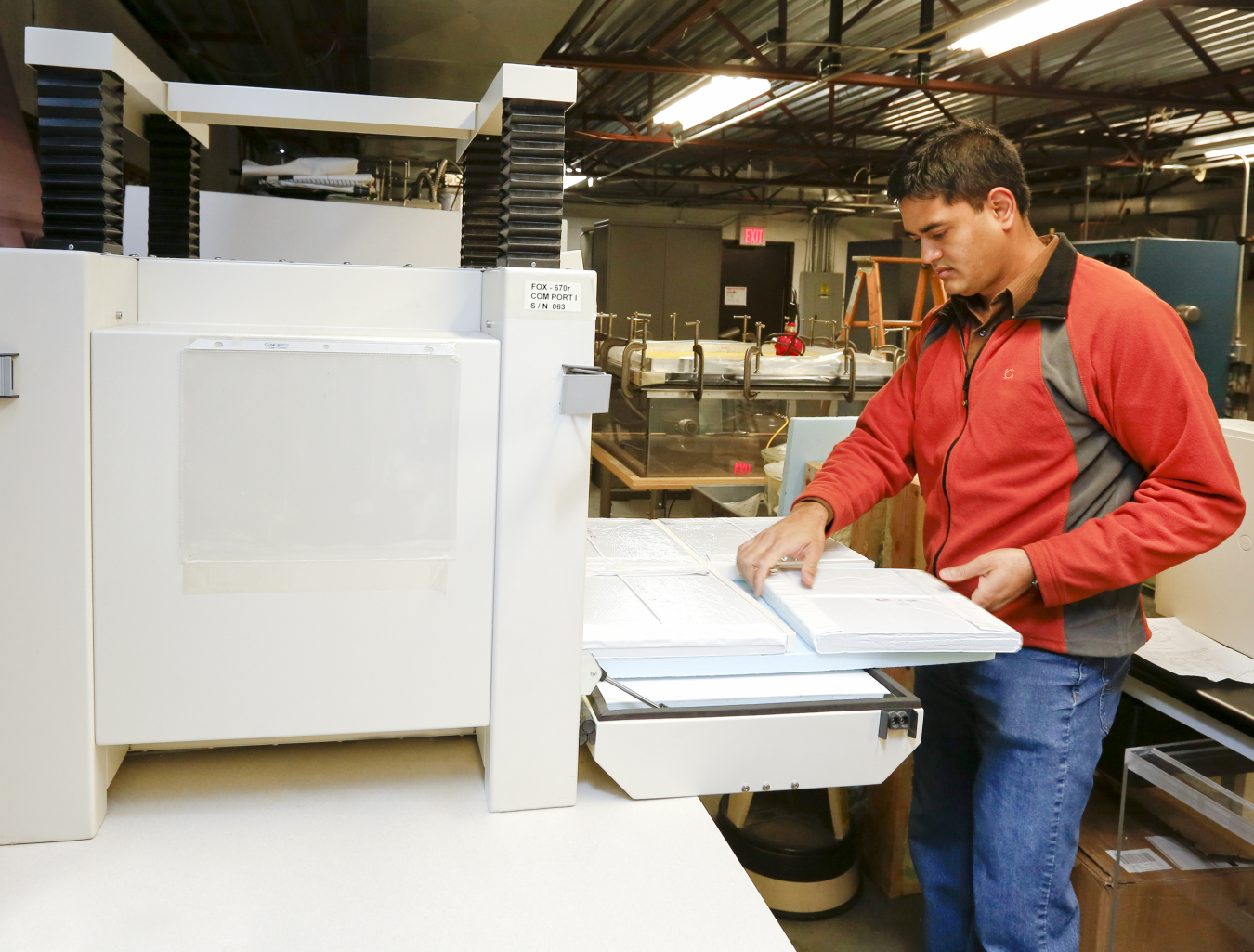
Oak Ridge National Laboratory's Kaushik Biswas analyzes small-scale modified atmospheric insulation foam composites in a multi-transducer heat flow meter apparatus.
This article originally appeared in the Oak Ridge National Laboratory Building Technologies Update Newsletter April 2016 Issue (URL: www.ornl.gov/buildings → Media → News)
Current commercially available insulation materials yield R-6 per inch or less with no major improvements in thermal performance since the 1970s. In collaboration with Firestone Building Products and NanoPore, an Oak Ridge National Laboratory (ORNL) team led by Kaushik Biswas and Andre Desjarlais continues to research prototype composite foam boards with modified atmosphere insulation (MAI) cores.
MAI is a new-generation vacuum insulation panel (VIP) that has the same thermal performance as traditional VIPs but can be produced at approximately 50% of the cost. MAI panels are 6 to 7 times more insulating than current, commercially available insulation materials. The objective of this project, funded by a DOE funding opportunity announcement (FOA), is to develop 2-inch-thick composite polyisocyanurate board insulation with MAI that has an R-value of 25 (R-12 per inch).
The first-generation prototype boards were created by attaching 12 MAI panels to a 4 by 8 ft sheet of 0.5-inch high-density foam substrate in a 3 x 4 array with spacing in between the MAI panels. The spacing allows for cutting the board to the needed length or for fastening the composite board to the building wall or roof without piercing embedded MAI cores and losing the vacuum. The panels were then fed through a standard polyisocyanurate foam board manufacturing line for encapsulation by the foam, creating an insulation board with an overall thickness of 2 inches. Two, 4 by 8 ft composite boards were then used to fabricate a wall assembly test specimen for measuring thermal performance in ORNL’s large hot box.
The hot box analysis, per ASTM C1363, yielded an R-value of 21.6 h-ft2-°F/Btu (or R10.8 per inch), exceeding the team’s expectations for the first prototype. A second-generation design that increases the overall area coverage of the MAI panels by reducing the spacings will be produced and characterized later this year, and higher thermal performance is expected.
This project is sponsored by DOE's Building Technologies Office. The team of ORNL, Firestone, and NanoPore was competitively awarded the funding in September 2014 under a BTO FOA.
